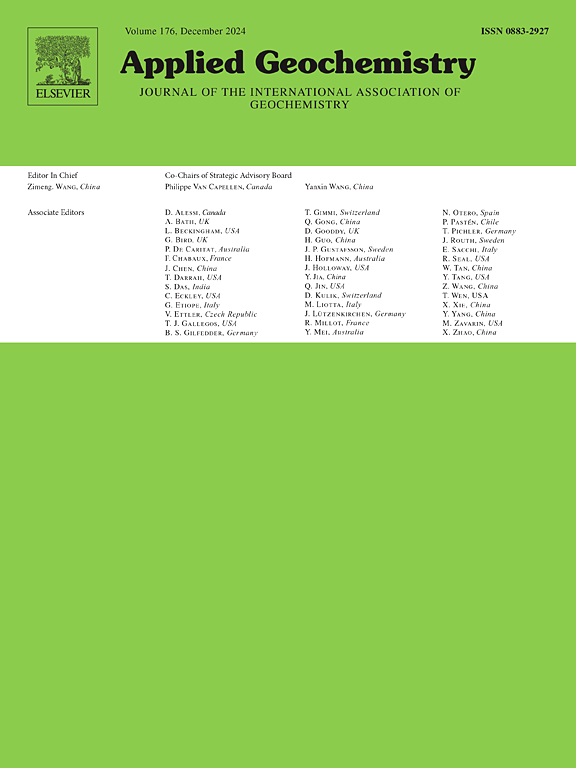Characterization of fractured serpentinite at Shulaps, Coquihalla, and Tulameen sites in British Columbia: Implications for carbon storage
IF 3.4
3区 地球科学
Q1 GEOCHEMISTRY & GEOPHYSICS
引用次数: 0
Abstract
This study presents a geological characterization of variably serpentinized harzburgite and dunite of the Shulaps, Coquihalla, and Tulameen sites in southwestern British Columbia. Surface geological data are used to determine the injectivity and reactivity for carbon storage via shallow CO2 injection and mineralization. Injectivity into a fracture-hosted reservoir was assessed by measuring fracture intensity and connectivity, which were quantified on an outcrop scale and considered together with the physical properties of rock samples collected from the field sites. Pervasively serpentinized harzburgite from Shulaps and Coquihalla are more fractured than partially serpentinized harzburgite and dunite. Additionally, rock mineral content, bulk rock chemical composition and dissolution rates of selected samples were used to assess reactivity. Serpentinized dunite from Tulameen is more reactive than serpentinized harzburgite. The data collected can help assess baseline data, modeling inputs, and well-targeting.
不列颠哥伦比亚省Shulaps、Coquihalla和Tulameen遗址断裂蛇纹岩的特征:对碳储存的影响
本文介绍了不列颠哥伦比亚省西南部Shulaps、Coquihalla和Tulameen遗址的变蛇纹化碳酸盐岩和暗粒岩的地质特征。利用地表地质资料确定浅层CO2注入和矿化储碳的注入性和反应性。通过测量裂缝强度和连通性来评估裂缝储集层的注入能力,这些指标在露头尺度上进行量化,并考虑从现场收集的岩石样品的物理性质。舒拉普斯和科基哈拉普遍蛇纹化的辉锌矿比部分蛇纹化的辉锌矿和暗锰矿更容易断裂。此外,所选样品的岩石矿物含量、总体岩石化学成分和溶解速率被用来评估反应性。图拉明的蛇纹石化白云石比蛇纹石化辉锌矿反应性更强。收集的数据可以帮助评估基线数据、建模输入和目标定位。
本文章由计算机程序翻译,如有差异,请以英文原文为准。
求助全文
约1分钟内获得全文
求助全文
来源期刊

Applied Geochemistry
地学-地球化学与地球物理
CiteScore
6.10
自引率
8.80%
发文量
272
审稿时长
65 days
期刊介绍:
Applied Geochemistry is an international journal devoted to publication of original research papers, rapid research communications and selected review papers in geochemistry and urban geochemistry which have some practical application to an aspect of human endeavour, such as the preservation of the environment, health, waste disposal and the search for resources. Papers on applications of inorganic, organic and isotope geochemistry and geochemical processes are therefore welcome provided they meet the main criterion. Spatial and temporal monitoring case studies are only of interest to our international readership if they present new ideas of broad application.
Topics covered include: (1) Environmental geochemistry (including natural and anthropogenic aspects, and protection and remediation strategies); (2) Hydrogeochemistry (surface and groundwater); (3) Medical (urban) geochemistry; (4) The search for energy resources (in particular unconventional oil and gas or emerging metal resources); (5) Energy exploitation (in particular geothermal energy and CCS); (6) Upgrading of energy and mineral resources where there is a direct geochemical application; and (7) Waste disposal, including nuclear waste disposal.
 求助内容:
求助内容: 应助结果提醒方式:
应助结果提醒方式:


